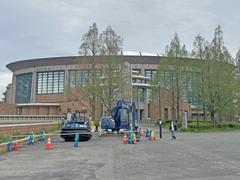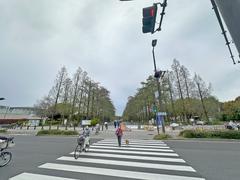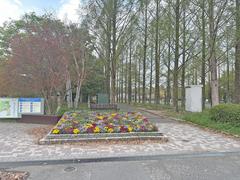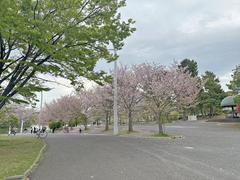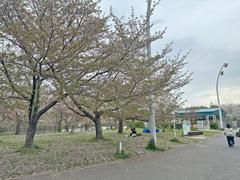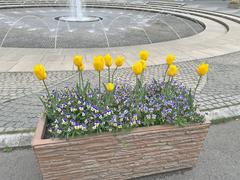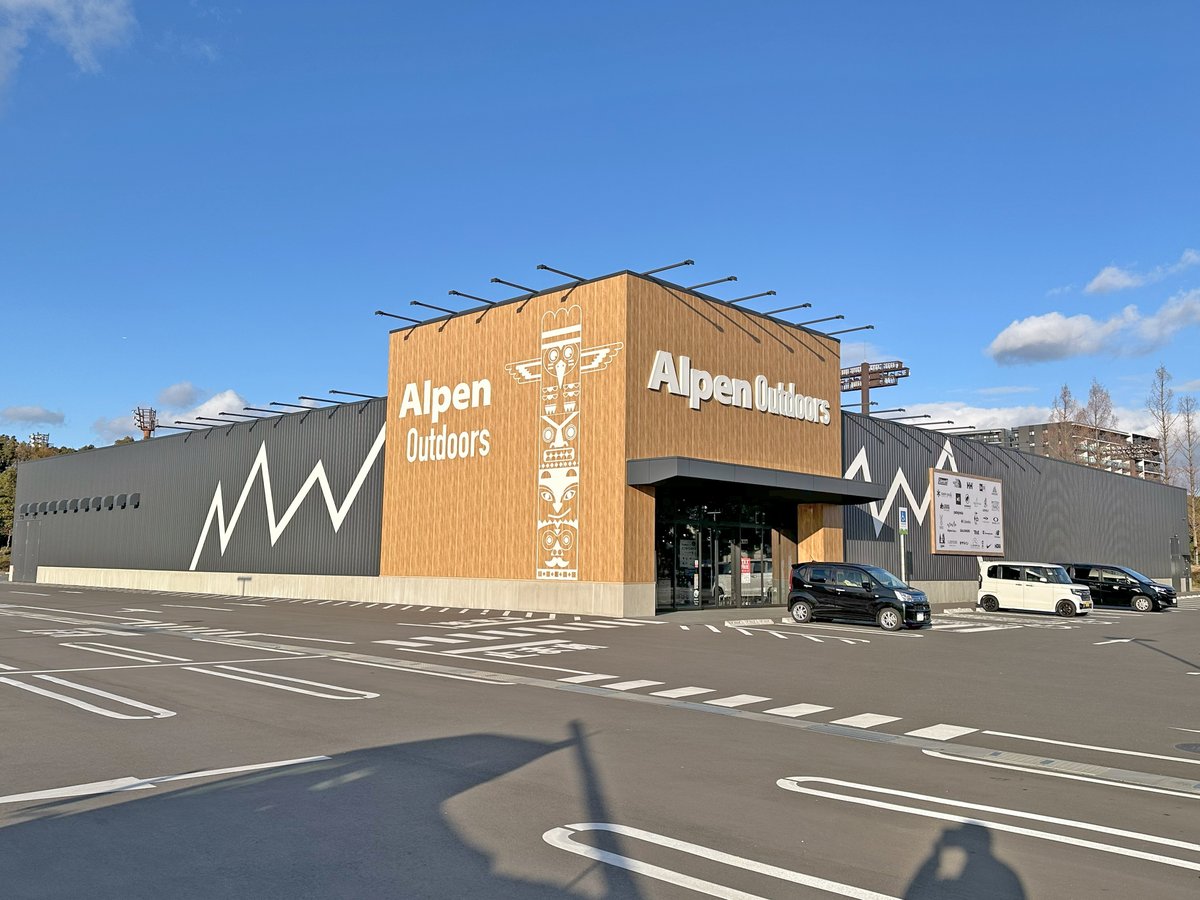
Tsurumiryokuchi Expo ‘90 Commemorative Park: Complete Visitor Guide for 2025
Date: 15/06/2025
Introduction
Tsurumiryokuchi Expo ‘90 Commemorative Park stands as a testament to Osaka’s dedication to environmental renewal and international cooperation. Established on the grounds of the 1990 International Garden and Greenery Exposition, this expansive park blends a unique legacy of global horticultural traditions, sustainable urban design, and vibrant recreational spaces. Today, visitors can explore themed gardens, relax in tranquil landscapes, and discover cultural highlights—all easily accessible via public transit. This guide provides comprehensive, up-to-date details on visiting hours, ticketing, accessibility, must-see attractions, and practical travel tips to ensure a memorable experience at one of Osaka’s premier urban parks (Osaka Info, Japan Highlights).
Table of Contents
- Park Origins and Legacy
- Environmental Transformation
- Cultural and Social Significance
- Key Attractions and Facilities
- Visitor Information: Hours, Tickets, and Directions
- Accessibility and Services
- Travel Tips and Seasonal Highlights
- Frequently Asked Questions (FAQ)
- References
Park Origins and Legacy
Tsurumiryokuchi Expo ‘90 Commemorative Park was created on a former industrial and landfill site in northeast Osaka, transformed in preparation for Expo ‘90—the first international horticultural exposition of its kind in Asia. Held from April to September 1990, the Expo welcomed over 23 million visitors and 83 countries, each contributing to themed gardens and pavilions. The event championed the theme “The Harmonious Coexistence of Nature and Mankind,” setting a new standard for urban green space recovery and international cultural exchange (Japan Highlights).
The Expo’s legacy continues through preserved international gardens and ongoing environmental initiatives, with the park serving as a living museum of global horticultural practices and sustainability.
Environmental Transformation
The park’s creation involved extensive remediation of polluted land, planting over 4,500 trees and 1.2 million shrubs, and establishing wetlands and water features to support biodiversity. Today, Tsurumiryokuchi Expo ‘90 Commemorative Park is recognized as a model for urban ecological restoration. Native flora and fauna thrive alongside themed gardens, and sustainable infrastructure—such as solar-powered lighting and rainwater management—underscores the park’s commitment to environmental stewardship (Osaka Info).
Ongoing maintenance practices emphasize organic gardening and public education, with regular workshops and events raising awareness about biodiversity and sustainable living.
Cultural and Social Significance
The park is a monument to international friendship, with each major garden and pavilion designed in partnership with participating countries from Expo ‘90. Annual events, flower festivals, and cultural exhibitions promote cross-cultural understanding and community engagement (Magical Trip).
Tsurumiryokuchi Park also enhances urban well-being for Osaka residents, offering sports facilities, playgrounds, picnic areas, and accessible paths. Community gardening programs and volunteer activities foster local pride and environmental stewardship.
Key Attractions and Facilities
1. International and Thematic Gardens
- International Garden: Over 55 themed gardens representing countries and regions worldwide, including France, China, the United States, and Egypt. Each features authentic landscaping and seasonal plantings.
- Dutch Windmill Hill: A photogenic windmill surrounded by tulip fields in spring.
- Japanese Garden: Traditional ponds, tea houses, and tranquil paths.
2. Sakuya Konohana Kan Greenhouse
- One of Japan’s largest botanical conservatories, housing over 15,000 plant species from around the globe. The greenhouse is wheelchair accessible and hosts rotating botanical exhibitions (Sakuya Konohana Kan Official).
3. Flower Hill
- Expansive meadows with seasonal displays of tulips, sunflowers, cherry blossoms, and cosmos, perfect for leisurely walks and family picnics.
4. Recreational Facilities
- Sports: Tennis courts, baseball fields, jogging trails, and cycling paths.
- Playgrounds: Multiple play areas and a dog run with breed-divided sections.
- Barbecue and Picnic Areas: Designated, reservable spaces for outdoor dining.
5. Other Notable Features
- Tsurumi Niiyama (Artificial Mountain): The highest point inside the park offers panoramic city views.
- Tower of Life: Iconic Expo landmark (not open to the public as of 2025, with reopening discussions ongoing).
- Tsurumi Green Center: Horticultural workshops and exhibitions.
Visitor Information: Hours, Tickets, and Directions
Park Hours
- General Grounds: Open 24 hours, year-round. Free admission (Osaka.com).
- Sakuya Konohana Kan: 10:00 AM–5:00 PM (last entry 4:30 PM), closed Wednesdays (Sakuya Konohana Kan Official).
- Other Facilities: Hours may vary; check the official website for up-to-date information.
Ticket Information
- Park Entry: Free for all visitors.
- Sakuya Konohana Kan Greenhouse: Adults ¥500, Seniors (65+) ¥250, Children (elementary and junior high) ¥250, children under 6 free.
- Purchase tickets at the greenhouse entrance or online.
Directions
- By Public Transit:
- Osaka Metro Nagahori Tsurumi-ryokuchi Line to Tsurumi-ryokuchi Station (main entrance adjacent).
- JR Osaka Loop Line to Tsurumi Station (10-minute walk).
- By Car: Large parking lots available (approx. ¥1,000/day).
- Bicycles/Scooters: Rental available inside the park; reserve in advance for weekends or holidays (Visit Osaka).
Accessibility and Services
- Wheelchair Access: Paved paths, accessible restrooms, and rental wheelchairs available.
- Multilingual Signage: Japanese, English, Chinese, Korean.
- Assistance: Support for visitors with disabilities available upon request.
- Dog Run: Fenced area for dogs with breed-specific sections.
- Dining: Restaurant near Oike Pond, vending machines, and picnic tables throughout the park.
- Rest Areas: Mushroom-shaped shelters and ample benches.
- Public Bath: Tsurumi Onsen Suishun near the park entrance.
Travel Tips and Seasonal Highlights
- Best Seasons:
- Spring (March–April): Cherry blossoms and tulips.
- Mid-May–Mid-June, Mid-October–Mid-November: Rose Garden at peak bloom.
- Autumn (October–November): Colorful foliage and cosmos.
- Summer: Sunflowers and lively events.
- Recommended Duration: 3+ hours for main attractions; a full day for a leisurely visit.
- What to Bring: Comfortable shoes, weather-appropriate gear, picnic supplies, camera.
- Crowds: Weekdays and early mornings are less crowded.
- Nearby Sites: Combine your visit with Osaka Castle or Tennoji Park.
Frequently Asked Questions (FAQ)
Q: What are the park’s opening hours?
A: The park grounds are open 24 hours; facilities like the greenhouse have set hours.
Q: Is there an entrance fee?
A: The park grounds are free; some facilities (greenhouse) require a ticket.
Q: Are pets allowed?
A: Dogs are allowed only in the designated dog run.
Q: Is the park wheelchair accessible?
A: Yes; wheelchairs are available for rent and the paths are paved.
Q: Can I rent bicycles or scooters?
A: Yes, with advance reservation recommended on busy days.
Q: Is the Tower of Life open?
A: No, the Tower of Life remains closed as of 2025.
References
- Osaka Info: Tsurumiryokuchi Park
- Japan Highlights: Visiting Tsurumiryokuchi Expo ‘90 Commemorative Park
- Sakuya Konohana Kan Official Site
- Japan Travel: Tsurumiryokuchi Park
- Visit Osaka: Bathe in Nature at Tsurumiryokuchi Park
- Magical Trip: Osaka Festivals and Events
Plan your visit today and download the Audiala app for interactive maps, event updates, and exclusive guides. For the latest park information, visit the official Tsurumiryokuchi Park website. Follow us on social media and tag #TsurumiryokuchiPark to share your experiences!

